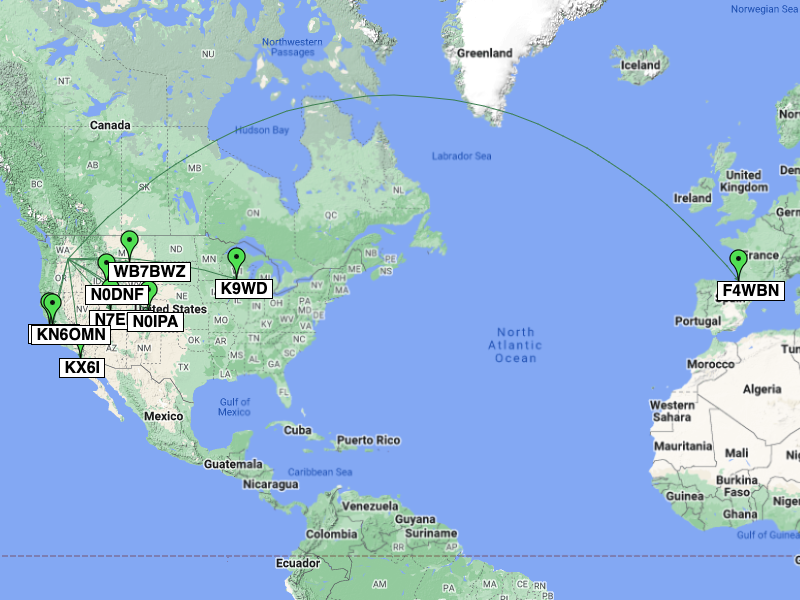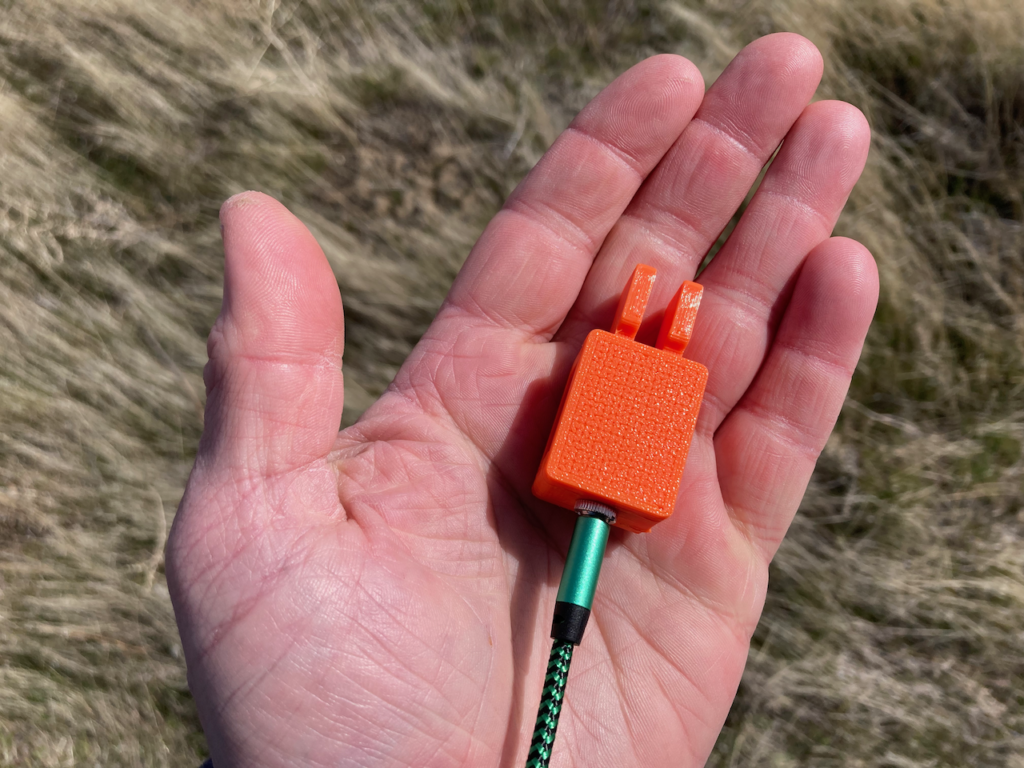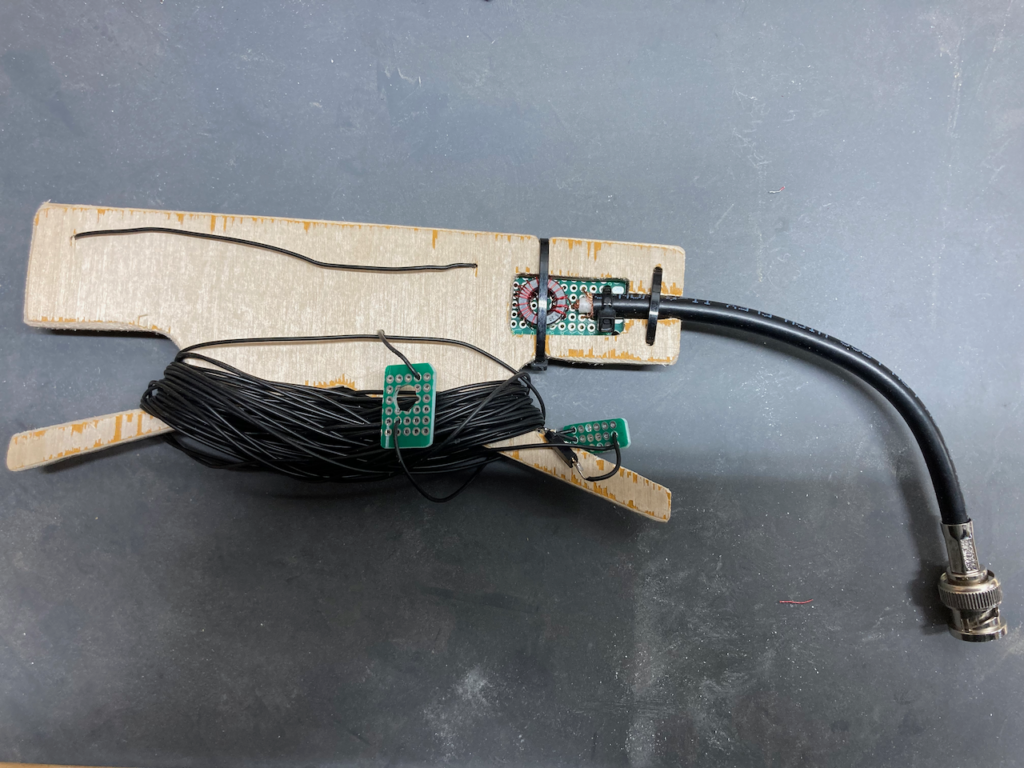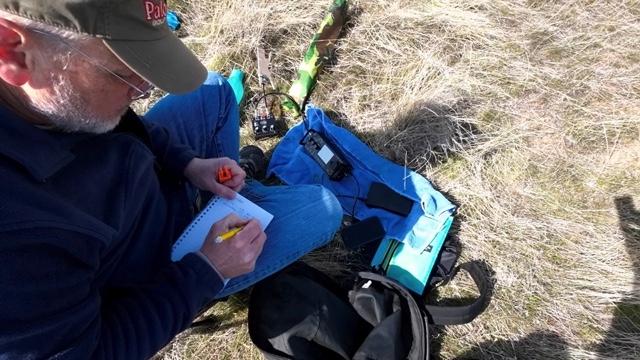Spring weather is making its appearance here, and Bob (WV7W) and I took advantage of it by hiking up a local “mountain” known as Badger Mountain, W7W/WE-061. This is a fairly easy hike, both because its a 15 minute drive from our homes and because it’s less than four miles round trip with an ascent of just over 1,000 feet. The day was beautifully sunny, with temps in the high 50s to low 60s and about a 15 kt breeze at the top.
This was our second SOTA excursion, and by now we’ve hit on a system that works for us. Once set up, one of us will spot ourselves and run on 20m until we get our 4 minimum QSOs or the pile dies down. We then re-tune for 17m, and the other person repeats. The first time we did this, I wondered whether the first guy would fish out the pool of chasers, but this hasn’t been the case. In fact, we both worked several of the same stations.
I went first on this trip, and my shift started with a bang. I was using a newly built EFHW based mostly on the excellent work of Adam (K6ARK) and was still tuning up, checking my SWR, and not yet sure I was even getting out. I had sent my QRLs and a couple of TEST TEST K7NXL and was checking the reverse beacon network. I wasn’t ready, but Bob though I was so he spotted me. I wasn’t even holding my pencil when I heard “S2S” and suddenly I was working my first QSO of the day and my first summit-to-summit ever with KX6I. A nice pile ensued and I worked 9 QSOs without ever calling CQ. Another highlight was working F4WBN in France on my measly little 5w.

A note about hearing “S2S:” this was an occasion when I copied and understood it subconsciously, without effort and without even really paying attention. It was as if Bob had said “there’s a summit-to-summit coming in.” I had never heard this before, although I’ve heard “P2P” while working POTA quite a bit. Keep in mind that I’ve still been a serious student of CW for less than a year and a half, and those three little characters were a very affirming experience to me. The practice is paying off.
When the pile died down, we took a break and set Bob up to work on 17m. We spotted him, and he quickly logged 9 QSOs, including the S2S with KX6I and the French station F4WBN. While Bob worked, I played videographer and you’ll see that footage soon on Bob’s House of Ham YouTube channel. He only called CQ once.

A fun little piece of kit that I used for this activation was a tiny 3-D printed key that Bob made from K6ARK’s STL files on Printables. This thing is so tiny, so simple, and so inexpensive that it doesn’t seem like it could work, but it works quite nicely. Bob had made us each one of these, and I used it the morning before our activation on my daily 80m social net just to get a feel for it. In use, I simply hold it in my left hand rather than setting in on a surface. The return springs on the paddles are 3-D printed right into the parts. Time will tell how many cycles these will hold up for, but I’m still impressed. The only criticism I have is that I’d like it if the body were a bit longer, which would make it more comfortable to hold. An example of the is the Pico Paddle, which I haven’t used but looks like what I have in mind.
The rest of my rig was an interesting mish-mash, but it worked. I had previously built K6ARK’s Ultimate UL Portable Resonant Antenna and it worked just fine for about a year. During Winter Field Day, I somehow broke it even though I didn’t think I was being terribly hard on it. The design struck me as too delicate for someone with as little physical grace as I have, so I wanted to put the same transformer onto a small PC board and mount it to a winder for the radiating element, providing strain relief for both the wire and the connection to the transceiver, and some protection for the transformer. I include a single link for operation on 17m and 20m. I was rushing to get it done for this trip, so the thing looks like the hacked-together prototype that it is. I hadn’t tuned it perfectly, and it had an SWR of about 1.4:1 on 20m. So just for fun I used my 4 States QRP Tuner to touch up the tuning. And the transceiver is my simple but trusty MCHF.

The winder/transformer unit worked just fine, even without being optimized. It was hastily built on a scrap of 1/4″ subflooring. I didn’t like its proportions or appearance, but it’s lightweight and functional, and I learned a lot in the process of building and deploying it. Look for another iteration soon.
Bob, on the other hand, is more pragmatic and well-equipped than I. He plugged my antenna (without the tuner) into his KX2, hit the autotune, and was off and running. We didn’t even take down the wire to shorten it for 17m.
